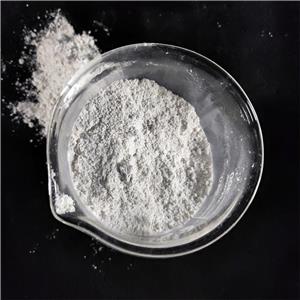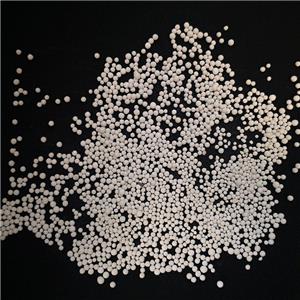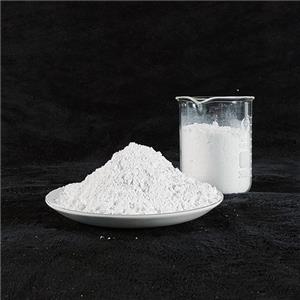What is the difference between light magnesium oxide, heavy magnesium oxide, active magnesium oxide and magnesium hydroxide?
What is the difference between light magnesium oxide, heavy magnesium oxide, active magnesium oxide and magnesium hydroxide?
magnesia
Magnesium oxide has been widely used in various fields in recent years after continuous development.Magnesium oxide is a white powder that exists in nature as free magnesite, the main component of magnesite is magnesium carbonate, and the main component of dolomite is magnesium carbonate and calcium carbonate eutectic.The proportion of artificial marble is 3.65-3.9, melting point of 2800℃, the relative molecular weight of 40.3, magnesium oxide according to the production process and use of different, can be roughly divided into the following categories:
Calcined magnesium oxide
According to the operating temperature: raw magnesite calcined at high temperature made of magnesium oxide is calcined magnesium oxide;Coke burned at 1400-1800℃ magnesium oxide is re-burned magnesium, also known as dead burning magnesium;Coal or gas as fuel at 700-1000℃ burning magnesium oxide is light burning powder, also known as caustic magnesium;Low grade magnesium oxide, also known as bitter earth powder, is fired by mixing low grade magnesite and anthracite.
Magnesite is the chemical composition of magnesium carbonate, relative molecular weight is 84.31, the magnesium carbonate is the main component, the SiO ₂, CaO, Al2O3, Fe2O3 is secondary, and the content of MgO style usually from 35% to 47%, dead-burned magnesite is mainly used for refractory material, the manufacturing magnesite chrome brick and calcium magnesium carbon brick, electric heating electrical components insulation filling material, feed, building materials also have application.
Industrial magnesium oxide
Industrial magnesium oxide is also known as light magnesium oxide, bulk density between 0.2-0.3g/mL, the sea brine as a raw material made of magnesium oxide belong to light magnesium oxide, using dolomite carbonization production of magnesium oxide is also classified as light magnesium oxide.
Light magnesium oxide is odorless, tasteless, non-toxic white amorphous powder, mainly used in the manufacture of enamel, ceramics, refractories, etc.Used as filler in the manufacture of polishing adhesives and paints;In artificial fiber, rubber (fluorine rubber, neoprene rubber) as an accelerator and catalyst;In the food processing as sugar refining when the decolorization agent, ice cream powder pH regulator;In medicine as a laxative and antacid, used in the treatment of duodenal ulcer and gastric acid;In agriculture as animal feed and fertilizer;In the construction industry, we can produce special cement and insulation board containing magnesium.
In addition, can also be used for water treatment, flue gas channel washing, and in cable, glass dye, uranium processing, silicon steel industry, insulation material industry, petroleum additives, electronics industry, casting, phenolic plastics and other industries have been applied.
Heavy magnesium oxide
The bulk density of the heavy magnesium oxide obtained after further processing and separation of impurities is between 0.5-0.7g/mL.Heavy magnesium oxide in magnetic materials can replace light magnesium oxide used in color television deflection coil (ferrooxide soft magnetic) and other ferrooxide magnetic materials;In the steel ball polishing industry as a polishing agent;Dye industry as aminophenol production auxiliary materials;Electrical industry as a raw material of phenolic resin.Secondly, it is also used in ceramic glass, industrial catalyst, feed and environmental protection industries.
Active magnesium oxide
Reactive magnesium oxide is one of many varieties of magnesium oxide products. Reactive refers to the degree of reaction difficulty of magnesium oxide, which is determined by the thickness of solid magnesium oxide particles (specific surface area).
Some of the indexes of active magnesium oxide are different from those of common magnesium oxide, such as the average particle size <2μm (2000nm) if the particle size distribution is suitable.The microscopic morphology is irregular particles or nearly spherical particles or sheet crystals, and the activity marked by citric acid (CAA value) is 12 25S (the smaller the value is, the higher the activity is).The activity indicated by iodine absorption value was 80~120 (mGi 2/100 gmGO).The specific surface is between 5~20m2/g, and the apparent specific volume is between 6^ 8.5mL /g.
It can be said that heavy magnesium oxide is pure MgO, light magnesium oxide is basic magnesium oxide, in which the percentage of light magnesium oxide plays an important role in the activity.Generally, high active magnesium oxide is made of basic magnesium carbonate decomposed for a long time at low temperature. The furnace structure is special, the energy consumption is high, and the apparent specific volume of the products is large.
Magnesium hydroxide
Magnesium hydroxide is a kind of inorganic weak base products, because of its good buffer performance, higher activity and adsorption capacity, and non-corrosive, non-toxic, harmless, and many other unique properties, so called "green neutralizer", "environment friendly flame retardant" and "the third base", is to implement sustainable development strategy, environmental protection and good ecological development in the process of one of the popular and respected.
Magnesium hydroxide can also be used as an intermediate material, can be used to produce magnesium oxide.Ultrafine magnesium hydroxide is also one of the important raw materials for producing nano-sized magnesium oxide.As a product, it has many uses, among which the consumption is large and the use effect is remarkable mainly in two fields.One is as an inorganic additive non-toxic flame retardant, with flame retardant, smoke elimination, drop resistance, filling and other properties;Second, in the field of environmental protection applications.As environmental protection products, because of its excellent performance, has occupied the first few magnesium hydroxide consumption.
The preparation methods of magnesium hydroxide are:
1. Physical crushing method Physical crushing method refers to the direct crushing of the ore, through dry coarse grinding and wet ultrafine grinding, to produce the required particle size level of magnesium hydroxide products, the more commonly used ore is brucite.
2, ore calcination hydration method of the ore calcination, the preparation of magnesium oxide hydration preparation of magnesium hydroxide, is the dissolution of magnesium oxide and magnesium hydroxide precipitation process, in which the dissolution of magnesium oxide is the control step.Due to the different composition of ore, magnesite is more used.
3. The liquid phase precipitation method has two sources of raw materials. One is that magnesite, dolomite, serpentine, etc. are processed by acidolysis or other methods to obtain magnesium salt, which is precipitated with alkali to prepare magnesium hydroxide.One is to prepare magnesium hydroxide by precipitation reaction with alkali from magnesium salt obtained from sea water, salt lake water and well brine.




